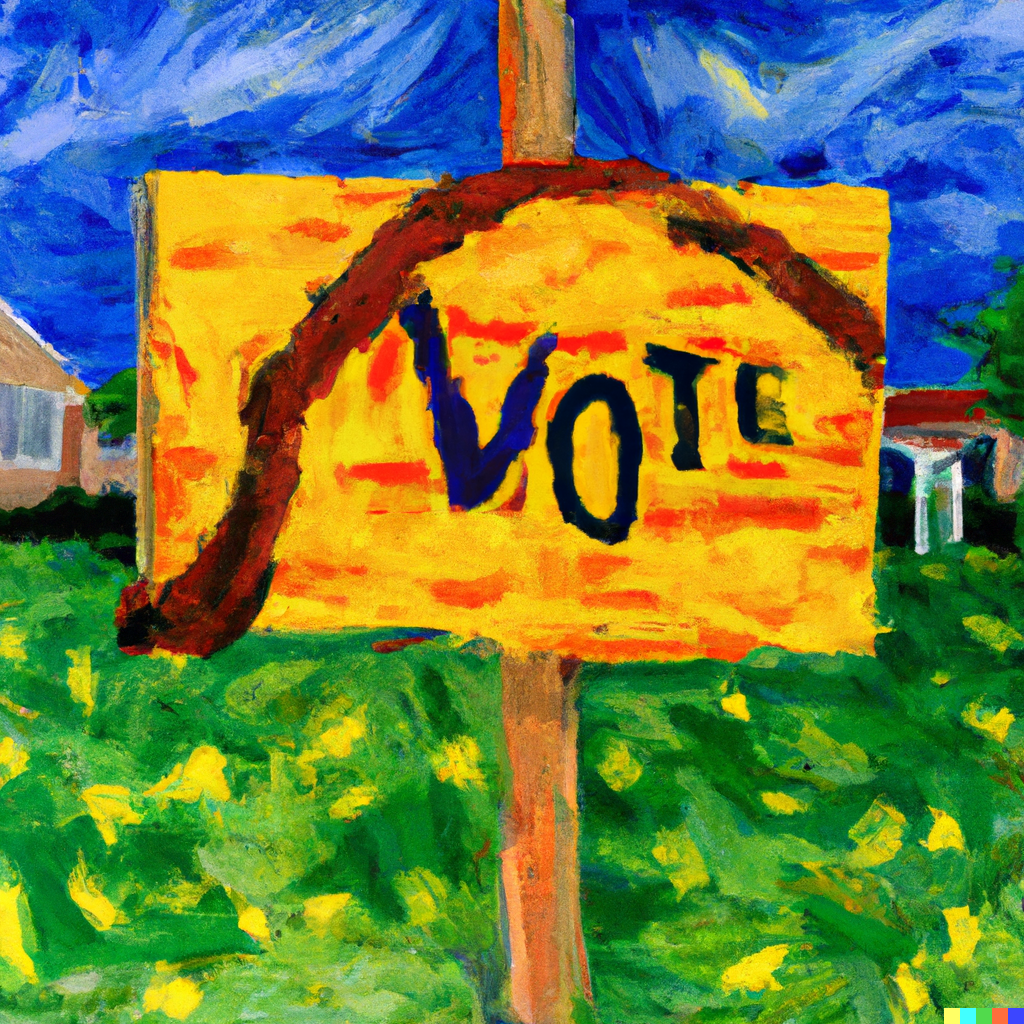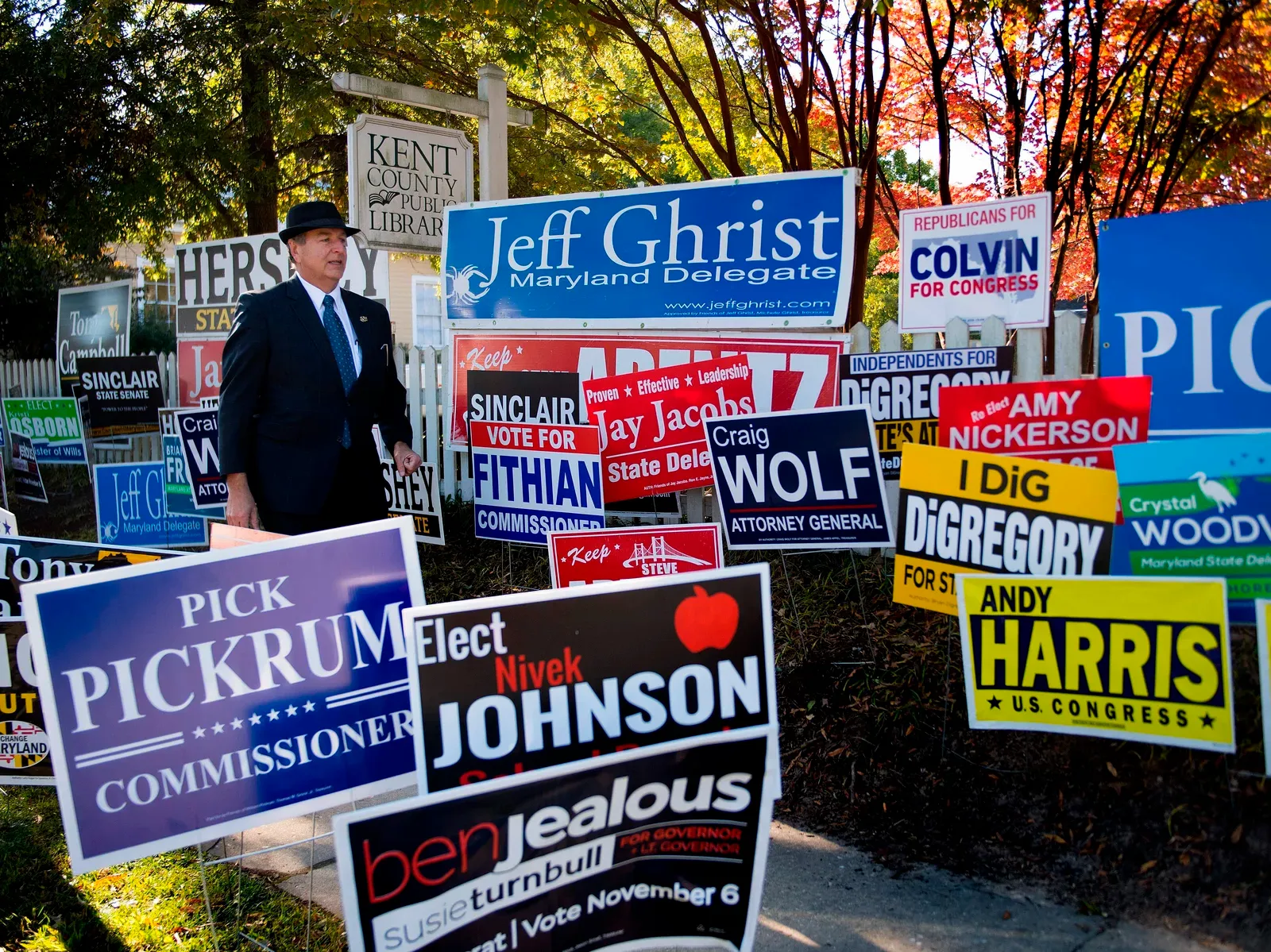Do lawn signs help win elections?

Most people who work in politics would say “No.” Some might even say “No!”
I would say “Kinda.”
On the surface, the concept of the lawn signs seems pretty simple. As a candidate, you want people to be aware of your name, and hope that awareness remains until Election Day.
And so, the chain of logic dictates that someone driving by a sign with your name on it multiple times per day should have an elevated awareness of your name, leading to a likely vote.
But I’ve never felt that’s how it works.
Everyone who has studied politics for more than 5 seconds is aware of the concept of “Name ID.” If I ask a random voter if they’ve heard of you or not, will they say yes or no?
And a prevailing theory about boosting name ID says that the more people see your name, the higher your name ID will be.
But a name alone doesn’t really do that. There needs to be some depth to the message in order for the name to become memorable.
An incumbent Congressmember for 20 years has name ID. Not because they’ve been on the ballot 10 times (although that certainly helps), but because – if they’re halfway decent at their job – they’ve been doing stuff for 20 years. Appearing on TV. Going on radio. And generally when they do that, they’re talking about all the neat stuff they’ve done for their district, or the Important Vote they just made.
Voters get a chance to put some depth behind the name, which is what builds Name ID (positive or otherwise).
Candidates can replicate this process through other standard campaign messages. Mail. TV. Digital. Candidate commercials aren’t just the candidates name on a screen for 30 seconds. It’s the candidate talking about stuff and ideas.
A lawn sign is the equivalent of that 30 second commercial with just a name showing (except in reality its about 1 second). And just because there may be a lot of them sprinkled throughout the district, the message resonance still isn't high.
Now, if you've expended resources on other sources of voter communication – mail, television, and others that have featured your logo – there may be some compounding resonance from signs – sort of a reminder that you've seen this person's messaging before. So signs can be helpful in that context.
And of course, if your sign is next to a bunch of other candidate signs, it's basically a visual pile of trash to passing voters.

Now, I did start this post by saying they “kinda” help win elections, so you’re probably still waiting to hear the good news (and if you’re a candidate staring at the 500 lawn signs in your garage, you’re probably really hoping to hear the good news).
"Sign obsession"
Despite their lack of efficacy, lawn signs have a uniquely powerful gravitational pull on the psyche of the candidate.
Candidates LOVE lawn signs. Each sighting of one of their signs in a yard provides a rush that no drug can match, and each sighting of an opponent's sign provides an emotional gut punch.
And don’t even get me started on volunteers.
Some variation of the following story has played out in front of my eyes a number of times:
It’s Saturday morning. You’ve just opened the box of donuts and placed the last box of muffins as you watch the first campaign volunteers trickle in.
And then the most panicked person you’ve ever seen nearly runs through the front door.
“We’ve got a problem!” they say, with peak alarm in their eyes.
“I just drove on Elm St. and our opponent had six – SIX! – signs, and we just had one!”
Now, the campaign manager or volunteer coordinator often tries to inject a calming presence, saying something to (correctly) downplay The Crisis.
But by now, half of the volunteers are also panicked by The Crisis.
And so instead of spending time discussing how we’re going to have door-to-door interactions with living, breathing voters, a not insignificant amount of time is spent on strategizing how to beef up Elm St. with inanimate signage.
This is the extreme version of what sign obsession can generate.
Turning signs into votes (and vice versa)
Fortunately, there is often a more healthy strain of a “sign motivated” mentality that runs through well-run campaigns.
A good organization will work hard to get lawn signs in yards. And it’s generally hard to do that unless you talk to voters. And convert voters into supporters. And convert supporters into advocates who are willing to place a sign in their yard.
It’s not an easy thing to do, to talk to a stranger and get them to do something overtly political in a relatively short period of time. But if you’re a candidate and campaign that’s “sign motivated” (not sign obsessed!), then you're motivated to do it. And the more you do it, the easier it gets.
Sometimes, campaigns will even pay bounties to staffers for getting signs in yards. (You wouldn't be shocked to hear that it goes from "it's nearly impossible to get signs in yards" to "I got 10 signs in yards this afternoon!" when each sign fetches a few bucks.)
A few election cycles ago, I took time on a Saturday morning to volunteer for Candidate A, who was running in a tough district against Candidate B.
As I walked around this well-manicured neighborhood knocking on doors, it felt like every 10th house had a sign for Candidate B. As an objective political observer, I felt it was an objectively impressive level of signage. As a volunteer for Candidate A, I felt it was a troubling level of signage.
It dawned on me that if Candidate B’s campaign had saturated this particular neighborhood that I had randomly been assigned to, they’d probably saturated many others. And so I did the rough math on how many voters they’d probably talked to in order to do that.
The conclusion was pretty easy to figure out: Candidate A had no shot at winning this thing, which was a far jump from the opinion I held before venturing out that morning.
My conclusion that day proved correct. When the election results came in, it was a trouncing.
So I see lawn signs as the symptom, rather than the cause, of a successful campaign.
The exasperated volunteer wasn’t necessarily wrong. They were concerned about signs for the sake of having more signs. But they were tapping into a fundamental issue: the opponent likely had more support on Elm St., which was tangibly revealed by the presence of signs. And unless they just happened to have several lifelong friends who all coincidentally lived on the same street, it's likely that support was generated by strong voter contact.
And so my advice would be that you should try to win the sign battle. But not by spending so much time putting them in public right-of-ways or illicitly tearing down the opponents signs, but by sharing a message with voters that compels them to want to take a very public political stand on your behalf.
That’s the moment a sign helps win an election.

Member discussion